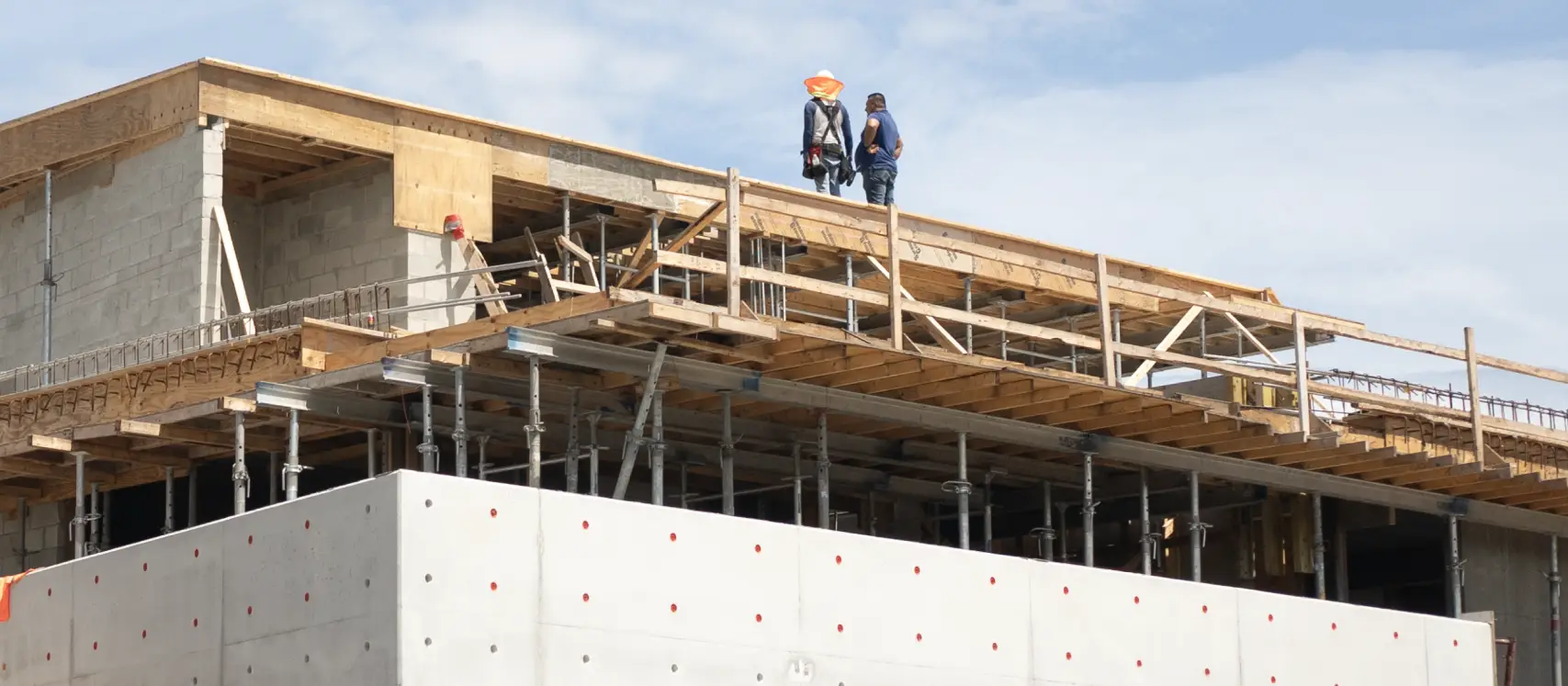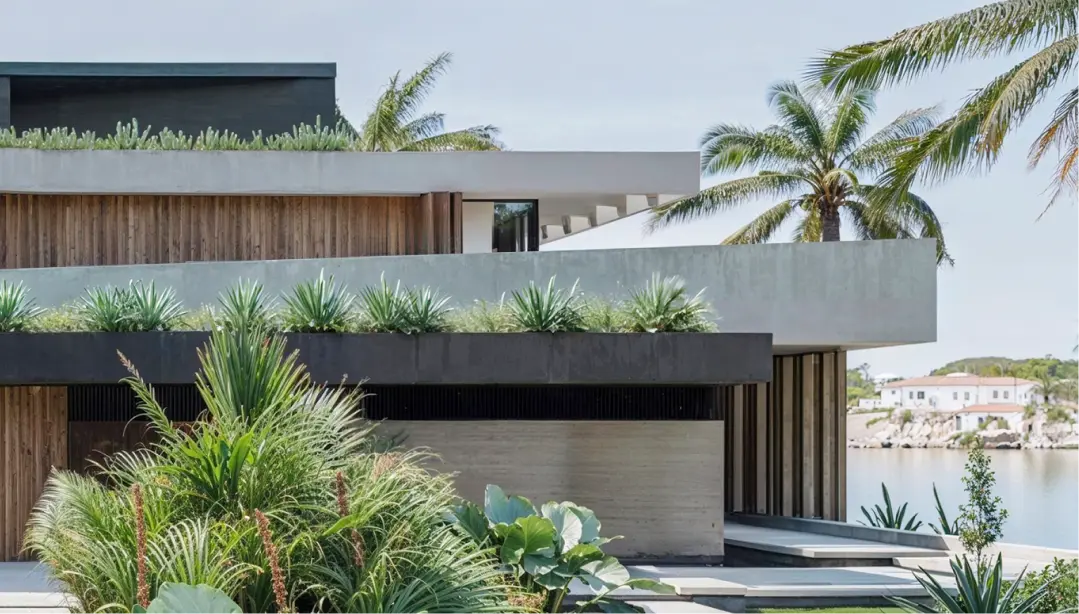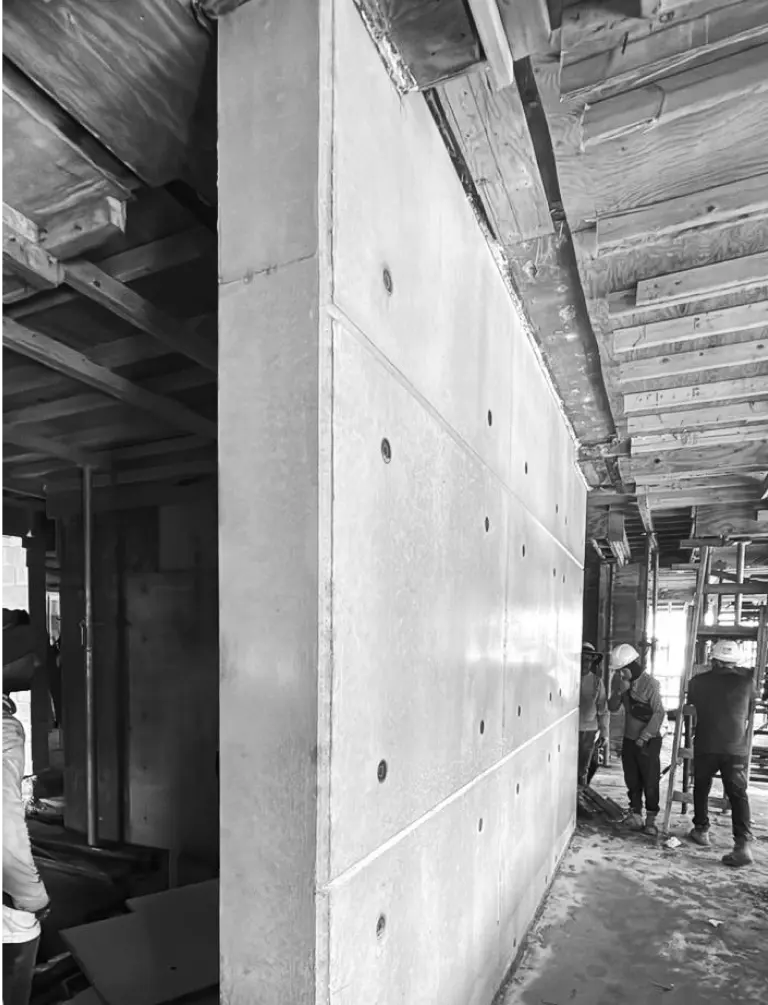13 August 2024
The DECEPTIVE Complexity of Architectural Concrete: 485 Sunset Drive, A Case History.

Engineering


This brutalist look is actually brutal to achieve. It’s far from as straightforward as “pour the concrete, and you’re done.”
In reality, achieving the transcendent starkness—which celebrates the physicality of the material—is one of the most complex procedures in construction. When working with architectural concrete, there is no room for error;
a mistake means demolition and starting over.
“As harsh as it looks, concrete is an utterly optimistic building material.”
—Roman Mars, host of the podcast 99% Invisible


Our Approach: Agile/PDCA Method


01. God Is in These Details: Designing the Architectural Concrete Look
The potent uniformity of concrete demands that every detail—edges, tie positioners, and fasteners—rises to the occasion. These results can only emerge from tight collaboration between the construction partner and the architectural designer. In the case of 485 Sunset Drive, we worked intimately with Remy Architecture, whose custom home work is celebrated in Miami and well beyond.
“Do it for the piece of sky we are stealing with our building, you do it for the air that will be displaced, and most of all, you do it for the fucking concrete, because it is as delicate as blood.”
—Peter Chadwick, author of This Brutal World
02. The Exquisite Details of Rebar Design and Placement
—Slate’s Design Blob
Spacing: Rebars must be positioned to allow for adequate separation from the formwork, without leaving too much space to violate the aesthetics.
Materials: Like some people we know, concrete is more vulnerable than it appears. Exposed concrete requires galvanized rebars and stainless steel wire for tying. In South Florida’s salty air, this helps ensure the steel remains in optimal condition. Other regions need similar climate awareness.

03. High-Stakes Formwork at 485 Sunset Drive
Capacity: Fasteners must match the concrete mix’s pressure, especially since exposed concrete often uses a highly liquid mix that adds extra pressure at the bottom and requires additional sealing.
Coordination: Formwork must align with other materials—like soil transitions—that also require careful sealing.
Materials: Plywood can only be used once and must have a specific film. Depending on the concrete type, vibration may or may not be used—SCC (Self-Consolidating Concrete) cannot use vibration.
Tightness: Preventing leaks is critical; any gap causes surface defects. Proper sealing of formwork joints is essential.
Form Release Agents: These agents prevent sticking and help achieve a smooth surface. They must be compatible with both the concrete mix and the formwork.
Cleaning and Maintenance: Residue from previous pours must be removed, and the formwork inspected for damage before each use.

04. The Concrete Mix: Battling Heat & Time
Timing: Florida’s heat accelerates curing, so the size and speed of each pour are carefully planned to avoid unwanted lines.
Additives: We add compounds that delay curing, improve elasticity, and reduce microcracks.
Execution: Each pour for a given element is completed within 30 minutes—no pauses once the process begins.
Preparation: All required concrete arrives on-site before starting, ensuring a continuous pour without interruption.
05. Pouring Sequence: The Decisive Act
Sealing: Complete sealing of the formwork is crucial, requiring strong support for fasteners.
Order: We pour the slabs first, then the shear walls, ensuring a better connection and a seamless appearance.
Mock-Up Panels: Small-scale panels replicate the actual construction to confirm the final aesthetic and quality.
Attention to Detail: SCC’s highly liquid nature demands extra care with exposed beams and walls—both structurally and visually—particularly where pours stop or where multiple pumps are used.
Curing Procedure: We follow a stringent curing process to ensure the concrete achieves the desired strength and durability, controlling temperature and moisture to prevent cracks and ensure uniform curing.

